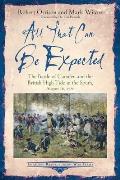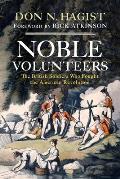As I described yesterday, the identity of the “Captain Smythe, of the Royal Army” whom Frank Moore quoted several times in the
Diary of the American Revolution compilation is a mystery. The manuscript diary Moore said he worked with has not been found since.
The
Army List for 1778 shows only one Captain Smythe in the
royal army, though there were plenty of Smyths and Smiths who might have attained that rank by the end of the war.
That one candidate for the diarist was the Hon. Lionel Smythe (1753-1801), younger son of Viscount Strangford. He started the war as a lieutenant in the 49th Regiment. In May 1776, Smythe became an aide de camp to Gen.
Percy, who made himself the young man’s patron. In fact, in
Fusiliers: The Saga of a British Redcoat Regiment in the American Revolution, Mark Urban wrote that Smythe was one of a couple of handsome young officers that Percy had crushes on.
Percy paid the £550 Smythe needed to buy Smythe the rank of captain of the light infantry company in the 23rd Regiment, the Royal Welch Fusiliers, in October 1777. In return, Smythe wrote “monthly” letters home to his benefactor, which Urban used as sources for his history of that regiment during the Revolutionary War.
I therefore hoped that we could line up what Urban reported from Capt. Lionel Smythe and what the diarist wrote and decisive evidence that they were or weren’t the same man. Unfortunately, the published sources just don’t offer enough material to confirm or eliminate that possibility. Maybe the additional letters contain more evidence.
According to Urban, Lionel Smythe “eschewed army politics or gossip” in his letters to Percy, “confining himself to factual accounts of what he had seen.” In contrast, many of the diarist’s entries are consumed with gossip about the Americans. But that could simply reflect what Moore and Urban were looking for in their respective sources. Lionel Smythe referred to the
American commander as “Mr. Washington” in a letter during that winter, and the diarist also referred to Washington without a military rank. But that was also the British commanders’ policy, so it may not be a useful clue.
Going back to the summer of 1776, Lionel Smythe was an aide to Percy during the British reconquest of
New York City. Smythe the diarist wrote about
John Hancock’s exhortations to the New York defenders in June and added a remark about Hancock’s “gouty legs, that were so shamefully overworked on the morning the gallant Percy marched to
Lexington.” So there’s some connection.
Lionel Smythe was presumably with Earl Percy when he helped to take Newport,
Rhode Island, that December. Percy remained in Newport into the spring of 1777 while the diarist was in New York by 1 March. Yet it’s possible that Percy had sent Smythe back to Gen. Sir
William Howe with news of the victory in hopes the general would reward the young aide. We know that by March there were rumors in New York about Percy and Howe being at odds.
Percy quit in a huff and returned to England by the middle of the year. Lionel Smythe presumably returned to the 49th Regiment.
Debrett’s Peerage states that the young officer was “severely wounded at the battle of
Brandywine” on 11 Sept 1777. I haven’t found any other mention of this, even in a family biography, but the 49th was in that battle. Capt. Lionel Smythe was in Philadelphia that winter, sending Percy a description of the
Mischianza. Meanwhile, Moore didn’t quote any diary entries from his Capt. Smythe for over a year after May 1777.
On 1 July 1778, the diarist complained about the
Continental Congress. On 29 July, Capt. Lionel Smythe and his light infantrymen went on board the
Isis to sail back to Newport, where the British expected an attack from the
French fleet. On 11 September he wrote to Percy about the British victory. The 23rd was back in New York a few weeks later. The diarist’s next entry, from greater New York, is dated 8 November.
On 13 Aug 1779, the diarist wrote about
Alexander Hamilton reportedly penning an epic poem to preserve the memory of the Revolution “in case Clinton’s light bob should extirpate the whole race of rebels.” Capt. Lionel Smythe was, of course, a commander of “light bobs” under Gen. Sir
Henry Clinton.
The next month, on 5 September, the young captain married Maria Eliza Phillipse, from an upper-class
Loyalist family. (Urban dated the marriage to 5 August, but New York and family records agree that it happened in September.) As explained in
Lives of the Lords Strangford, Smythe’s family was titled but no longer wealthy. In fact, his father had taken holy orders and become dean of Derry. Urban treated this as a classic example of American money marrying a handsome European aristocrat, but there was a catch: a lot of the Phillipse wealth was behind enemy lines and at risk in the event of an American win.
In October 1779 the 23rd Regiment, including the light infantry company, sailed for
Charleston. The regiment was in South Carolina, North Carolina, and Virginia all through 1780 and 1781 until
Yorktown. Meanwhile, the diarist wrote twice from the New York area in 1781, on 10 March and 16 September. So is that the proof we want that the two men aren’t the same? Unfortunately, not all the 23rd’s officers went south. Capt.
Frederick Mackenzie, for example, remained in New York as one of Clinton’s staff officers. Urban didn’t quote any letters from Capt. Lionel Smythe about the southern campaign or anything else after his marriage, so we can’t be sure where he was.
Capt. Lionel Smythe retired from the army after the war and followed his father into a clerical vocation. Two years later, the older man died, and as the only surviving son Lionel Smythe became the seventh Viscount Strangford. He continued to hold “the living of Kilbrew, in the diocese of Meath,” in Ireland. He also had a royal pension to make ends meet, though he lost it for a while after voting in the Irish House of Lords against a bill the government favored.
In 1801 the
Gentlemen’s Magazine reported that the seventh Viscount Strangford died on 1 October “At Bristol hot wells, in his 48th year.” He and his American wife had four children, the eldest of whom became the new viscount. (A couple of years later, he published a volume of translations of poetry from the Portuguese.)
As I said, it’s possible that Capt. Lionel Smythe’s letters to Percy contain more information that could give a clear answer to whether he was Moore’s “Capt. Smythe.” It’s also possible that research on the career of another British officer whose name was almost Smythe could make a better match for the diary entries. But right now it’s still a mystery.











